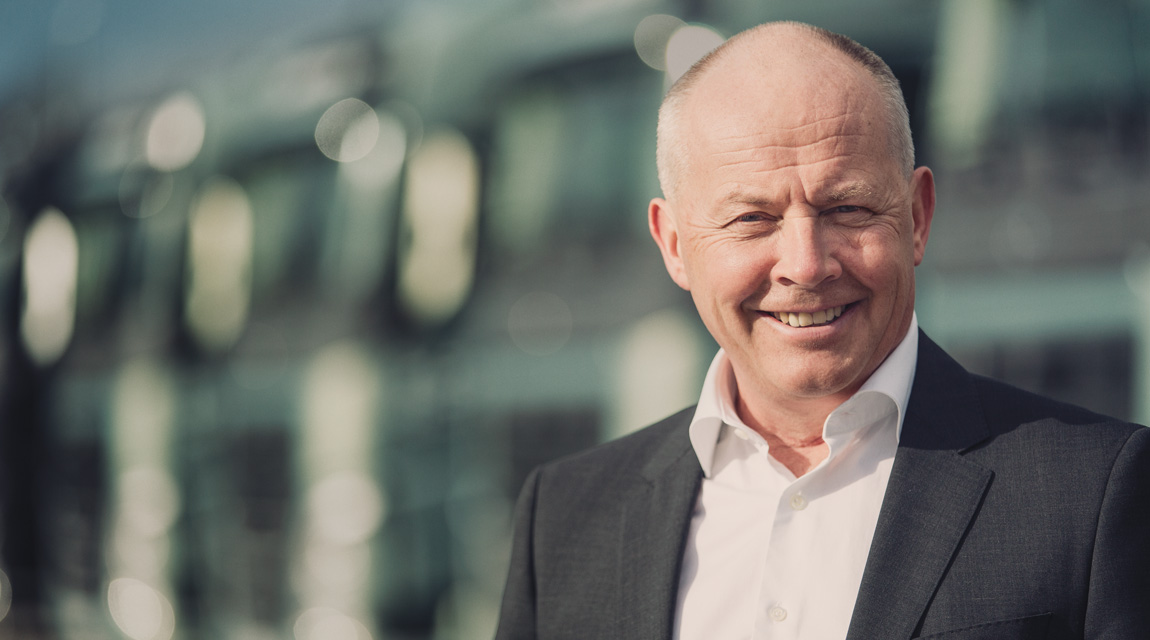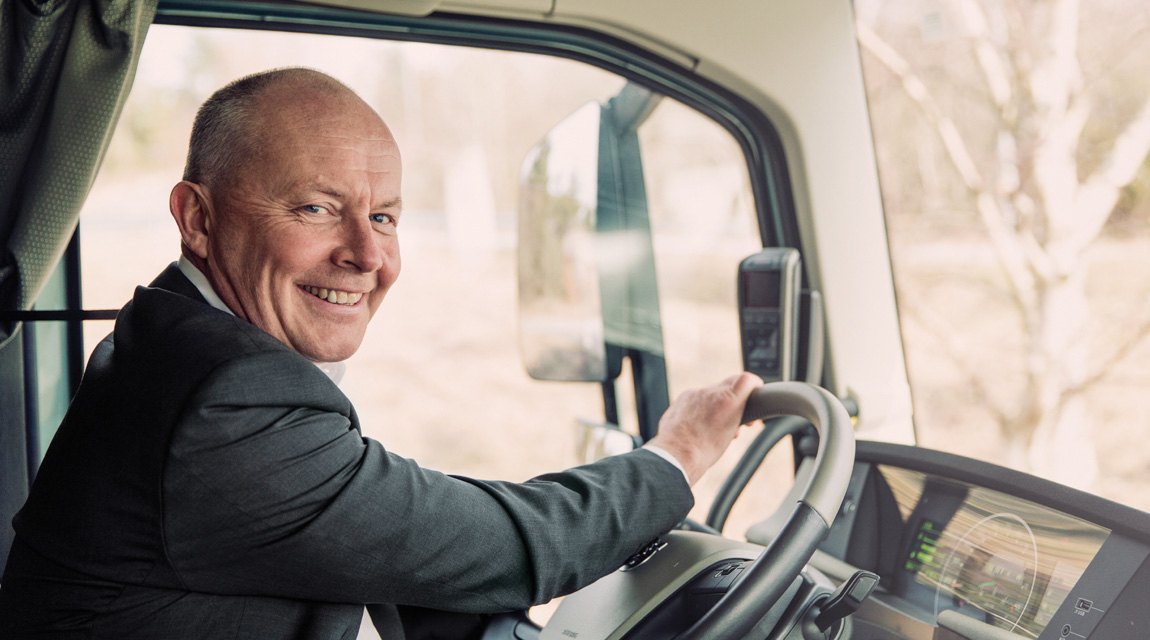Face to face with Claes Nilsson!

We have launched an all-new series in FOCUS, entitled Face to Face, in which we interview captains of industry. This time around, CHARLEEN CLARKE goes face to face with Claes Nilsson, president of Volvo Trucks.
You appear to be riding a wave of success right now?
Yes. For us, as for many of our competitors, it is a very hot market. In more than 30 years with Volvo, I have never seen Europe and North America (which is very important to us) being at such high levels at the same time. Both markets are over 300 000 (I’m talking 16 t and above). So the situation is quite extreme.
As you know, our performance in Europe is fairly stable and for the last couple of years we have enjoyed about 17 percent market share, which is the highest in many decades. In North America, our market share has previously been higher – in 2015 we had 12 percent market share – but last year that dropped to less than ten percent.
The reason is that we had a generation shift; we had a phase-out and a phase-in period and we are still continuing to ramp up the new products as a result. Our latest products have been extremely well received, though, and we are now back to 11 or 12 percent market share in North America. We hope we can further increase that percentage.
As a result of these buoyant markets, you are battling to meet demand, correct?
Yes. The worst lag is in North America where, if you want a big sleeper cab, you will have to wait until the end of the year! In Europe, we are managing better and delivery times are more normal.
How important is South Africa in the Volvo world?
It’s extremely important. We sell our products in more than 140 countries around the world. Within the Volvo Group, we are THE premium global brand, but our biggest international markets are South Africa, Korea, Australia … and we’re also growing very rapidly in China, even though our market share is still very small there.
China is a very interesting market for us because of its interest in moving to zero emissions. It’s interesting to see the demand for a more European-type of product in China. That’s why we have seen our volumes go from 1 000 a year to 4 000 this year. All those markets are keeping up very strongly and we’re very happy with our performance.
Last but not least, there is Latin America. There was a terrible downturn in Brazil. This market is finally recovering, although levels are still low, and I’m pleased to report that, during the downturn, we maintained our market share in Brazil. Thankfully our performance in other countries in that region has been good. Generally speaking, we are very pleased with our volumes in all the international markets.
Going forward, what is your strategy?
We will continue to focus on the heavy-duty market. Of course we also have a very good medium-duty range, but it’s really the heavy-duty market that is the core of our business. We are traditionally very strong in long haul and now we’re also taking important steps in construction (we have been strong in this market sector in Scandinavia and the United Kingdom for a long time). In North America, we are very much focused on long haul. Our sister brand, Mack, is focusing on the construction sector there.
What about future technology? What do you have in mind?
Going forward we have some important visions. One is around zero accidents. We’re also looking at new technologies, not least of which is autonomous driving, which will also improve safety. Even if we’re not moving very quickly to autonomous vehicles, much of that technology can be brought back and used in the current trucks for improved safety.
Another important vision that we have is the drive towards zero emissions. Our liquefied natural gas (LNG) trucks are definitely contributing towards this vision, as are our electrified trucks. Those represent very strong steps in that direction. Gas is definitely viable right now, using diesel technology, which many of our customers are eager to test. A challenge is the availability of LNG. Some countries are very aggressive when it comes to rolling out LNG infrastructure; Holland is one such country. On the other hand, others aren’t as progressive.
In regard to electric trucks, for the time being, we think that the quickest applications for electrified vehicles lie in shorter distances and maybe not in such heavy loads.

When will electric vehicles be suited to long-distance transport?
I don’t know the answer to that. Obviously battery development is moving quickly. In fact, it’s moving faster than we thought it would and we will definitely see electrified heavy-duty vehicles in time to come. What’s interesting, though, is that, if you consider the range and distance between charging, 60 percent of our customers can use electric vehicles today.
The emissions legislation in Europe will certainly push us towards electrification; by 2025 we will have to sell a fair number of electric vehicles. I will not be surprised to see a reasonable share of long-haul vehicles being electrified on European roads by that time.
For the time being, will diesel still be around?
Most definitely. One of the challenges for us is that we also need to have a very competitive truck that operates with the current diesel technology, which will be around for many years. So we need to continue to invest in current technology while at the same time investing in new technologies. This is something that is causing us quite a bit of stress: how to balance new and current technologies. What’s clear is that we will need to invest more in research and development in the future.
What is your view on heavy-duty trucks running on hydrogen?
We think that hydrogen (or something else) has its place as a range extender. It could be useful in the future. The serious long-haul operations will always require range extenders, which is where hydrogen could play a role. We are working with several of the leading providers of hydrogen, although I don’t think that we will see hydrogen standing on its own right now. Could the situation be different in five years? Possibly.
I’m told that Renault and Volvo are splitting and going their separate ways in the United Kingdom (UK). Is this correct?
Yes. We’re seeing that, in some markets (such as the UK), we need to have dedicated networks. That’s why we have made the decision to separate the brands in the UK and various other European countries too.
Does this mean that the strategy of aligning the brands has not been as successful as you’d envisaged?
You could say that. Maybe we went too far in the drive towards cost savings. Maybe aligning the brands was not the optimal solution when it came to taking care of our customers.
On a similar note, and turning back specifically to South Africa, Volvo and UD appear to be working well together. What about DongFeng and Eicher? Could they be incorporated into Volvo within South Africa?
We could do it, but obviously UD and Volvo and the other wholly owned brands are one story. The UD and Volvo products complement each other very well and this is not necessarily the case with the other brands (there could be some overlaps, which would make things a bit tricky). We will continue to keep joint ventures at arm’s length. So no incorporation in South Africa for now.
Published by
Charleen Clarke
focusmagsa




